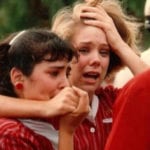 Mysteries
Mysteries  Mysteries
Mysteries  History
History 10 Surprising Stories About the Texas Rangers
 Humans
Humans 10 Philosophers Who Were Driven Mad by Their Own Theories
 Miscellaneous
Miscellaneous 10 Video-Game-Worthy Weapons and Armors from History
 Weird Stuff
Weird Stuff 10 Psychics Who Accurately Predicted Wartime Events
 The Arts
The Arts 10 Pieces of Art Inspired by a Broken Heart
 Health
Health 10 Science Fiction-Sounding New Medical Treatments
 History
History 10 Surprising Facts About the Father of Submarine Warfare
 Space
Space Ten Astonishing New Insights into Alien Worlds
 Weird Stuff
Weird Stuff 10 Bizarre Summer Solstice Rituals Still Practiced Today
 Mysteries
Mysteries Top 10 Haunting Facts About the Ghost Ship MV Alta
 History
History 10 Surprising Stories About the Texas Rangers
 Humans
Humans 10 Philosophers Who Were Driven Mad by Their Own Theories
Who's Behind Listverse?

Jamie Frater
Head Editor
Jamie founded Listverse due to an insatiable desire to share fascinating, obscure, and bizarre facts. He has been a guest speaker on numerous national radio and television stations and is a five time published author.
More About Us Miscellaneous
Miscellaneous 10 Video-Game-Worthy Weapons and Armors from History
 Weird Stuff
Weird Stuff 10 Psychics Who Accurately Predicted Wartime Events
 The Arts
The Arts 10 Pieces of Art Inspired by a Broken Heart
 Health
Health 10 Science Fiction-Sounding New Medical Treatments
 History
History 10 Surprising Facts About the Father of Submarine Warfare
 Space
Space Ten Astonishing New Insights into Alien Worlds
 Weird Stuff
Weird Stuff 10 Bizarre Summer Solstice Rituals Still Practiced Today
10 Worst Unsolved Mass Murders In US History
Tragically, school shootings, terrorist attacks, and random acts of violence are all too common in the United States. Because of this, and because of wall-to-wall media coverage of such events, it can be easy to assume that this era of mass murder is unprecedented in American history. Well, it is sad to say that mass murder has been a problem for a while now. Indeed, believe it or not, American citizens are currently living in a time of unprecedented peace.[1]
Not only does this list deal with some of the worst mass murders in American history, but each remains unsolved to this day. The murders were carried out for a variety of apparent reasons, ranging from greed to bloodlust. However, the true motives behind these horrid crimes may never be known, given their unsolved character.
10 The Walker Family Murders

Christmas is usually a time of good cheer, good food, and good times spent with family. Christmas 1959 was supposed to follow this tradition. However, for one Florida family, the Christmas season became a nightmare.
The Walker family of Osprey, Florida, included father Cliff (25 years old), mother Christine (24 years old), a son named Jimmie (three years old), and a daughter named Debbie (two years old). On December 19, 1959, the entire Walker family was out running errands. The first to return to their modest ranch-style house was Christine. At first, nothing seemed out of the ordinary to the housewife. She even managed to put away her groceries before she was attacked.
Despite being caught off guard by her attackers, Christine managed to fight back. In fact, investigators later found that Christine’s shoes were coated in blood that did not belong to her. Ultimately, Christine was killed with a shot to the head from a .22-caliber gun. The next to die were Cliff, Jimmie, and Debbie. Cliff and Jimmie were dispatched with the .22, while Debbie was also shot but was likely killed by being drowned in the family’s bathtub. Detectives theorized at the time that the killer or killers had run out of ammunition.
The bodies were not found until the following day. Daniel McLeod, a ranch worker at the Palmer Ranch, where Cliff Walker worked, went to the Walker home in order to grab Cliff for a planned pig-hunting excursion. Daniel immediately informed the police of his gruesome discovery.
A subsequent search of the Walker home found that several items were missing: Cliff’s pocketknife, Cliff and Christine’s marriage license, and a high school majorette uniform that Christine had once worn. Given the personal nature of these stolen items, investigators theorized that the killer or killers had known the Walkers, and given that Christine had been raped, it was likely that she was the main target.[2]
Police investigated both McLeod and Elbert Walker (Cliff’s cousin, who was known to be a hothead) but decided that both men were innocent. A popular theory has it that ex-cons Perry Smith and Dick Hickock, the main villains in Truman Capote’s In Cold Blood, actually carried out the murders. Besides similarities between the Walker family murders and the murder of the Clutter family of Kansas (also in 1959), it is also known that both Smith and Hickock were in Miami Beach at the time of the murders. Furthermore, Florida police officers learned through their investigation that the Walkers were interested in purchasing a Chevy Bel Air prior to the massacre. It just so happened that Smith and Hickock had driven to Florida in a stolen Bel Air.
9 The Lane Bryant Murders
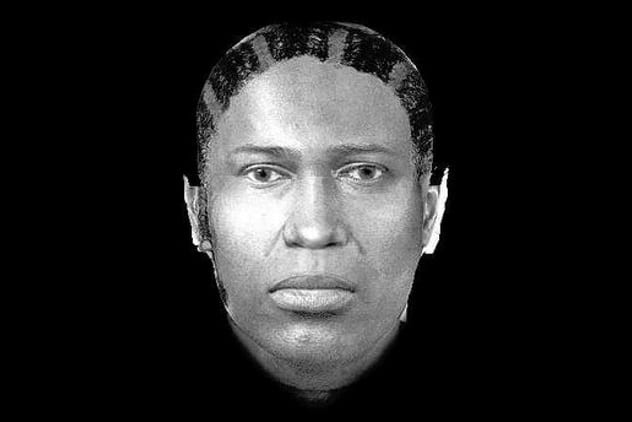
Lane Bryant is known as a popular clothing store for bigger women. In the usually quiet Chicago suburb of Tinley Park, one Lane Bryant store became infamous for a senseless shooting rampage that occurred on February 2, 2008.
Before 10:45 AM, four customers, the store’s manager, and a part-time employee were taken to the back of the Lane Bryant store located at the Brookside Marketplace shopping mall. The victims were 37-year-old Connie R. Woolfolk of Flossmoor, Illinois; 22-year-old Sarah Szafranski of Oak Forest; 42-year-old store manager Rhonda McFarland of Joliet; 33-year-old Carrie Hudek Chiuso of Frankfort; and 34-year-old Jennifer Bishop of South Bend, Indiana. The sixth woman was also held captive but managed to survive. Police have never revealed her name.[3] The unidentified killer used duct tape to tie up his victims before shooting them execution-style.
Investigators deduced that the attack had been part of a robbery, and the attacker had opened fire after McFarland managed to call 911. Police even managed to obtain the killer’s voice on the emergency phone call. Furthermore, on February 11, 2008, a composite sketch of the killer was released showing a young black male with tight and thick cornrows. A 3-D-enhanced version of this sketch was released in February 2018.
8 The Las Cruces Bowling Alley Massacre
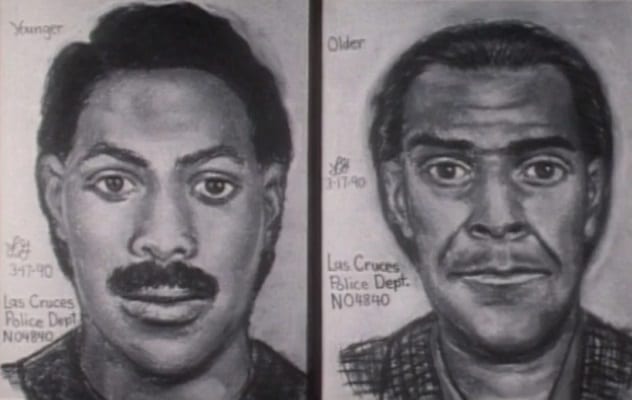
On the horrible morning of February 10, 1990, two armed men entered the Las Cruces Bowl located on East Amador Avenue in Las Cruces, New Mexico. Several people were inside the bowling alley, including three adults and four children. Ultimately, the shooters would kill four people before escaping into the unknown.
The victims included 34-year-old manager Stephanie Senac, who was in her office with her 12-year-old daughter Melissa Repass, and 13-year-old babysitter Amy Houser. Also inside was cook Ida Holguin. All four were brought into Senac’s office by the two gunmen, who told the women to lie facedown. After asking Senac to retrieve $5,000 from the bowling alley’s safe, the gunmen shot all four several times. Then, at that moment, the alley’s mechanic, 26-year-old New Mexico State University student Steven Teran, arrived with his daughter and stepdaughter in tow. These three would be overpowered and shot dead by the gunmen.[4] All victims were shot in the head before the two criminals set fire to the bowling alley.
Despite being shot five times, Melissa managed to call 911. This quick thinking saved the young girl’s life, and, for a time, it saved her mother’s life as well. Sadly, Senac died in 1999 due to complications from the shooting. Due to the primitive state of forensics in 1990, along with the fact that the fire destroyed evidence, the case remains cold. The only tangible evidence is a composite sketch released in 1990 which shows two middle-aged black or Hispanic males with mustaches.
7 The Keddie Murders
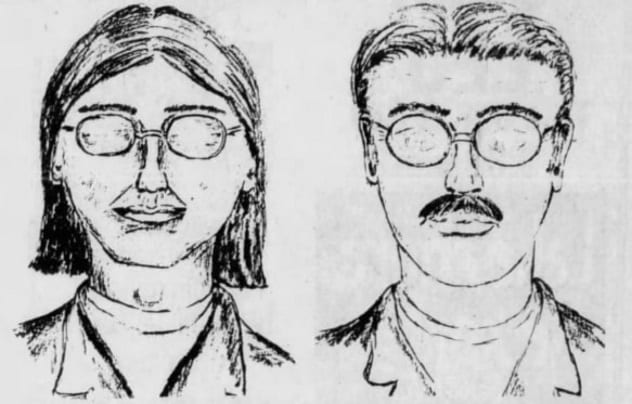
Keddie, California, is an out-of-the-way kind of place. It’s not the type of place where famous people live or where news is made every day. Keddie, however, became infamous on the night of April 11, 1981. On that night, Glenna Sharp, members of her family, and a family friend were bludgeoned to death while they slept the night away at Cabin 28, which they had been renting from the Keddie Resort since November 1980. The family had migrated from Connecticut to Keddie following Glenna’s separation from her husband James.
On the day of the murders, John Sharp, Glenna’s eldest child, spent the day in Quincy, California, with his friend Dana Wingate. The pair would eventually return to the cabin. Both would be murdered. Glenna and Tina Sharp would suffer the same fate, although Tina’s skeletal remains would not be found until years later. Miraculously, three young boys managed to sleep through the entire massacre.
Investigators found that Glenna, John, and Dana had been bound with white medical tape and appliance wire, and all three had suffered stab wounds along with being bludgeoned and strangled.[5] Such overkill caused Plumas County Sheriff’s Office special investigator Mike Gamberg, along with Sheriff Greg Hagwood, to suspect that as many as six people may have taken part in the murders. The suspects wore gloves and did not leave behind their blood at the scene, but they did leave footprints. A hammer and a knife were recovered at the crime scene, while survivor Justin Sharp provided information that led to a composite sketch.
Other clues at the crime scene included the position of the bodies. John Sharp was found face-up and with bloody hands near the front door. Dana was left lying on his stomach with his hands linked with John’s, thanks to a piece of electrical cord. Glenna was found naked from the waist down and gagged with a blue bandana and her own panties. Glenna’s body might have also been arranged in a sexually explicit manner.
All of these clues would be wasted during the initial investigation, which is blamed by contemporary law enforcement for failing to follow up on solid leads and outright ignoring pieces of evidence.
6 The Burger Chef Murders
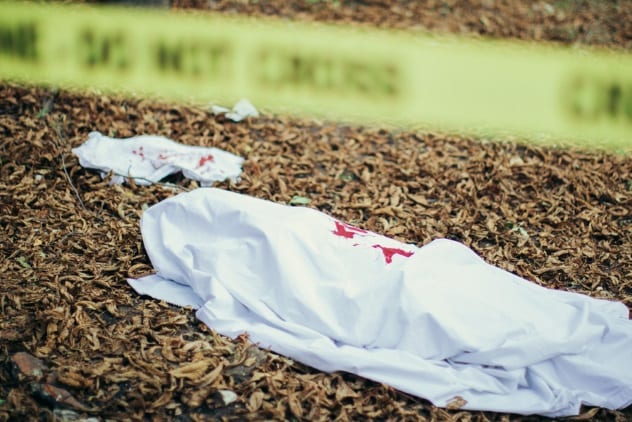
On November 18, 1978, an off-duty employee of the Burger Chef, a local fast food joint in Speedway, Indiana, found the restaurant’s back door wide open. Upon further investigation, the employee found $500 missing, along with four other employees.
For two days, police and citizen volunteers searched the area for the missing workers. The first discovery was a vehicle belonging to one of the abducted four. The next and final discovery occurred on November 19, when all four bodies were found in a rural part of Johnson County. Two of the victims had been shot in the head, neck, and shoulders by a .38-caliber handgun. One victim had been stabbed to death with a hunting knife, while another had been bludgeoned to death.[6]
In response to the murders of 17-year-old Ruth Shelton, 20-year-old Jayne Friedt, 16-year-old Mark Flemmonds, and 16-year-old Daniel Roy Davis, Burger Chef offered the public a $25,000 reward for any clues that could lead to an arrest. No arrests have been made in the case, although one tantalizing suspect, 36-year-old convicted rapist Donald Ray Forrester, did confess to crime before recanting. By all appearances, the Burger Chef murders probably came as the result of a botched robbery.
5 The Florence Salon Murders
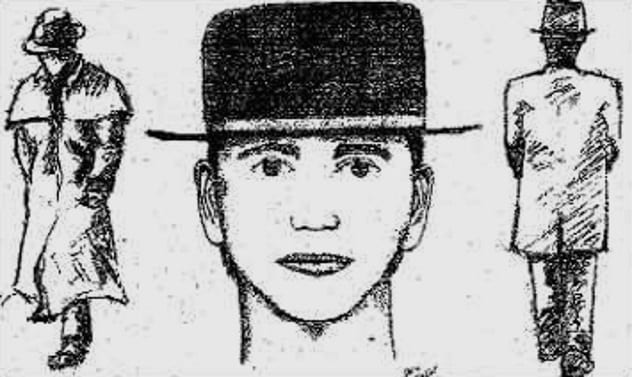
On November 6, 2001, at approximately 11:00 AM, a woman arrived for an appointment at the Hair Gallery, located in Florence, Montana. When she entered the salon, she first saw the corpse of 62-year-old Dorothy Harris. Harris was found in the front room in a pool of her own blood. Then, when the police arrived, they found two more bodies in the utility room at the back of the store. These belonged to 44-year-old Brenda Patch and 71-year-old Cynthia Paulus.
All three women had been attacked with a knife; the killer had slashed each of their throats. Investigators quickly ruled out robbery as a motive, for nothing was taken from the store. Also, the killer did not seem to be motivated by lust, for none of the victims had been sexually assaulted.[7]
Investigators quickly learned on that awful morning that they had a terrible and inexplicable crime on their hands. First of all, Sheriff Perry Johnson told the press that the scene inside of the Hair Gallery was “horrific” and that all three victims’ throats had been cut deeply. Indeed, the victims were nearly decapitated by their killer.
In a sick twist of fate, police learned early on that the witness who found the first body may have arrived at the scene barely minutes after the murders. They came to this conclusion because a local bank revealed that Dorothy Harris had visited them 30 minutes prior to the murders. The bank was located 32 kilometers (20 mi) away from the hair salon, thus meaning that the murders happened in a very narrow window of time.
The woman who found Dorothy Harris’s body described seeing the case’s only suspect—a strange young male described as wearing a long, dark jacket (maybe a Western duster) and a black hat that may have been a top hat or fedora and carrying some kind of object in his hands. Given the suspect’s strange features and supposedly awkward gait, some have proffered the idea that the killer was a woman disguised as a man.
4 The LaSalle Street Murders
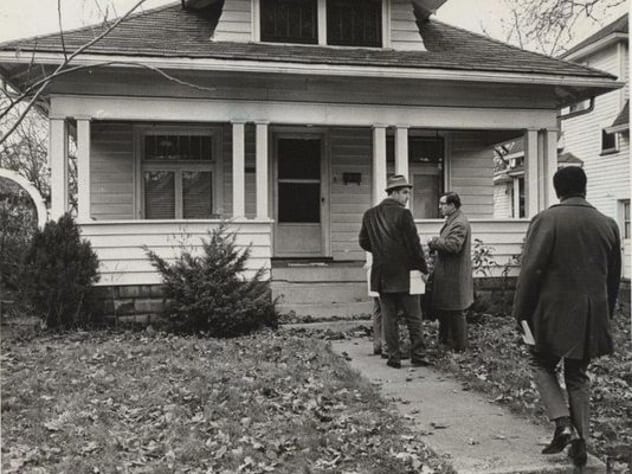
On December 1, 1971, three corpses were found at a house located on North LaSalle Street in Indianapolis. The house belonged to two of the victims, 34-year-old Robert Gierse and 27-year-old Robert Hinson. The third victim was identified as 27-year-old James Barker.
Upon a close examination of the crime scene, police discovered that each victim had been struck in the head with some kind of blunt object. The victims’ hands were bound, and their throats had been so deeply slit that they had all nearly been decapitated. The killer or killers had also left each corpse in separate rooms. Hinson’s body was located in the front bedroom, Gierse’s was located in a back bedroom, and Barker’s corpse was found in the bathroom that lay between both rooms.
All three of the victims worked in the microfilm industry. Barker worked for the large corporation Bell and Howell. For a while, Hinson and Gierse had worked for Records Security, a company based in Jasper, Indiana. Prior to their deaths, Hinson and Gierse had moved to Indianapolis in order to start their own microfilm company called B&B Microfilm Services. Barker lived somewhere nearby at the time of the murders but was known to frequently spend his nights with his two close friends at the house on LaSalle Street.
The three men were reputed to be very hard workers. It was not uncommon for all three to clock in hours of overtime in order to accomplish projects. As a result, all three were wealthy and successful bachelors. Some locals insinuated, though, that the men were connected to the Mafia and had plundered clients and equipment away from Records Security. These rumors provided investigators with their first major theory.
The first man suspected was Ted Uland, the owner of Records Security. Uland had taken out a life insurance policy on both Gierse and Hinson worth $150,000. Years later, in 2000, the daughter of a man named Fred Harbison told the local media that her father had written a deathbed confession claiming to have carried out the triple homicide as part of a contract killing drawn up by Uland.[8]
Other theories about the case include a scorned, jealous husband or boyfriend (all three men had an ongoing bet about who could sleep with the most women) and the local mob.
3 The Yogurt Shop Murders
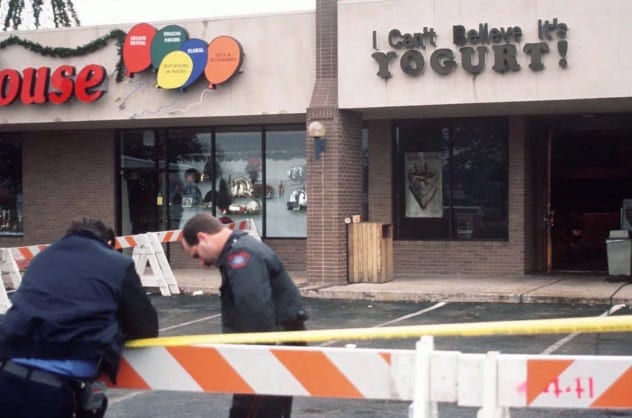
On December 6, 1991, firefighters in the capital city of Austin, Texas, responded to a suspected arson at a strip mall. The strip mall, which was located on the northwestern edge of the city, included a yogurt shop with the witty name, “I Can’t Believe It’s Yogurt!” The firefighters managed to put out the blaze, but what they found inside necessitated the involvement of the Austin Police Department.
Inside the yogurt shop were the bodies of four young women—13-year-old Amy Ayers, 17-year-old Eliza Thomas, 17-year-old Jennifer Harbison, and her 15-year-old sister Sarah. All victims were found naked, bound, and with gunshot wounds to their heads. Three of the bodies were stacked together, and at least one of the girls had been raped. The other three were so badly burned that further examination was almost impossible.[9]
The source material for author Beth Lowry’s 2016 true crime book Who Killed These Girls?, the yogurt shop murders continue to haunt the citizens of the Lone Star State. Closure came tantalizingly close when four young men were arrested in Texas and West Virginia in October 1999. Twenty-four-year-old Robert Bruce Springsteen and 25-year-old Michael James Scott were the only two to go to trial, and both men were convicted on flimsy DNA evidence. In 2001, Springsteen was sentenced to death.
Five years later, the Texas Court of Criminal Appeals overturned Springsteen’s conviction. This was due in part to the case of Detective Hector Polanco, who was investigated for coercing 13 false confessions. Following a negative DNA test in 2008, Springsteen and Scott were both released in 2009. In a strange coda to the story, one of the men arrested in 1999, Maurice Pierce, was shot and killed by police in December 2010, after stabbing Austin police officer Frank Wilson in the neck.
2 The Dardeen Family Murders

The microscopic town of Ina, Illinois, was rocked by a quadruple homicide on November 18, 1987. On November 19, police went to the trailer of 29-year-old Robert Keith Dardeen, who had failed to show up for work at the Rend Lake Water Conservancy District. Keith (his preferred name) was not one to skip work, so his supervisor first called Keith’s parents. When they failed to provide any information about Keith’s whereabouts, the police were notified.
Inside the trailer, the police found a veritable house of horrors. Keith’s wife, 30-year-old Ruby Elaine Dardeen, was found dead alongside the couple’s three-year-old son Peter. Both had been beaten to death with a baseball bat that had been a birthday present for Peter. More horrific still was the fact that Elaine had been pregnant at the time of her death. The killer or killers had beaten Elaine so badly that she had gone into labor midway through the attack. The newborn girl was pulled into the world and then summarily beaten to death.[10] Keith’s body would not be found until the next day. His corpse, which was found in a nearby field, showed that Keith had been shot three times. His penis had also been removed.
Given the absolute horror of the crime scene, locals began to blame Satanists for the crime. Others suggested that drug addicts had killed the Dardeen family in order to hock their possessions for drug money. Both of these suspicions were quickly ruled out, as there was no evidence of ritual activity, and a VCR and a camera were left untouched at the crime scene. For a time, Illinois investigators suspected serial killer Angel Maturino Resendiz, a Mexican-born and Texas-based transient who was arrested in 1999. Another Texas serial killer, Tommy Lynn Sells, confessed to the crime in 2000, but over the years, his story repeatedly changed. Sells was executed in 2014.
1 The Blackfriars Massacre
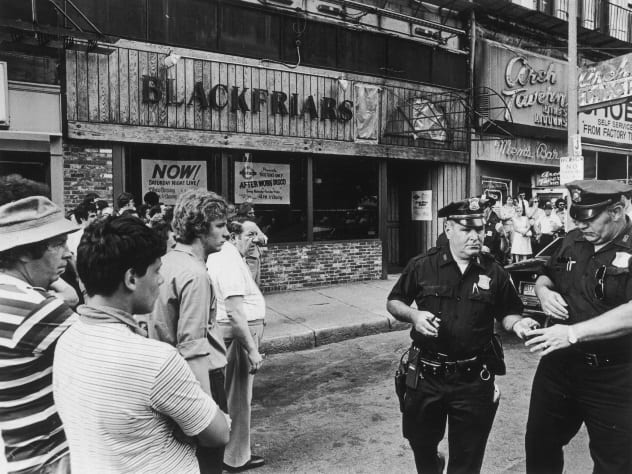
At around 2:00 AM on June 29, 1978, three gunmen entered a Boston bar called Blackfriars. The Irish pub, which was located downtown, was known to have a rather rough reputation. Namely, members of Boston’s underworld frequented Blackfriars, and on the night in question, several men in the bar’s basement were busy playing a game of backgammon when they were fired upon. All told, bar manager John A. “Jack” Kelly, Charles Magarian, Peter Meroth, Freddie Delavega, and Vincent Solmonte were shot several times by a 12-gauge shotgun and a .25-caliber automatic in what appeared to be a robbery gone wrong.[11]
The case of Jack Kelly made things a little interesting. A former investigative reporter with Boston’s WNAC-TV, Kelly had been fired in November 1976 after making several threatening allegations against Mayor Kevin White. White was known to associate with local gangsters, including Solmonte, who had given Kelly the job at Blackfriars following his sacking at the television station.
The Boston police believed that the massacre may have been motivated by the mob, and two mobsters—drug dealer William Ierardi and Robert Italiano—were arrested and tried for the crime before being acquitted in 1979. Ierardi was a known associate of Stephen “The Rifleman” Flemmi, the second-in-command of the Winter Hill Gang and a close friend of James “Whitey” Bulger.
Without question, the massacre was a gangland killing, yet no one is sure if the perpetrators were members of the Patriarca crime family, the Bulger gang, or some other unknown Italian or Irish crime outfit. The case remains one of the worst mass murders in Massachusetts history.
Read about more disturbing unsolved murders on 10 Unsolved Murders Linked To Organized Crime and 10 Unsolved Murders With Strange Links To The Occult.






![11 Lesser-Known Facts About Mass Murderer Jim Jones [Disturbing Content] 11 Lesser-Known Facts About Mass Murderer Jim Jones [Disturbing Content]](https://listverse.com/wp-content/uploads/2020/09/jonestown2-copy-150x150.jpg)

